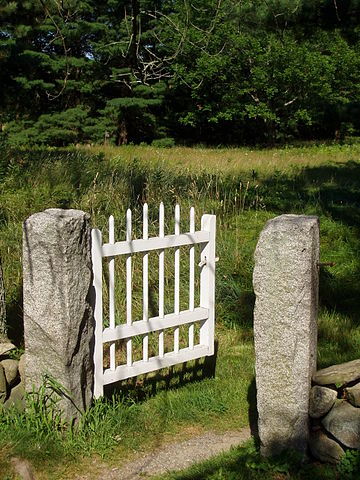
Nonprofit Brand as Place
By Tom Peterson
Quit reading this and take a minute to think of an actual place that means a great deal to you—where you are energized or nourished. Is there a park, a coffee shop, a certain neighborhood or street, a section along a river?
Hey, you’re still reading! Really, stop and think of that place.
How do you experience it? What makes it special?
When it comes to branding, it helps to think of an organization as a place we all experience. When you visit your group’s place, will you feel like you’re in a dark alley, not wanting to go further? Or on that pathetic street lined with fast-food restaurants, strip malls and power lines? Or hopefully, will you feel like you’re in a garden or at a coffee shop full of people talking and connecting with each other?
with each other?
 “Brand” used to mean logo, typeface, color, packaging, jingles and ads. Today it’s better thought of as the overall experience anyone—a supporter, customer, passerby—has when they brush against your organization.
“Brand” used to mean logo, typeface, color, packaging, jingles and ads. Today it’s better thought of as the overall experience anyone—a supporter, customer, passerby—has when they brush against your organization.
Nonprofit Brand
Each year thousands, if not millions, will come into contact with your group. They may catch 60 seconds on the local news, see a magazine article or a friend’s Facebook like. They may glimpse it on a brochure or t-shirt, or talk with a staff person or volunteer. The cumulative effect of these visits forms the experience that person has of your organization. Whether they sought you out or stumbled upon you, they will judge you; if the experience is bad or mediocre, an opportunity is lost. But if it’s positive—moves the person toward confidence and loyalty—you may gain a lifetime friend.
What makes a difference does place make? Here’s an example condensed and paraphrased from Tony Hiss in The Experience of Place:
Drs. Abraham Maslow and Norbett Mintz conducted a study in the 1950s in which they asked volunteers to look at photos of people’s faces. They had rigged three rooms. An ugly room looked like a janitor and storage closet with a hanging light bulb, torn shades, battleship grey walls, boxes, trash cans, mops and dust. The beautiful room had large windows, indirect light, a Navajo rug, paintings, sculpture, beige walls, a bookcase, a soft armchair, and a mahogany desk. The average room gave the appearance of a clean, neat, office in no way outstanding.
Volunteers were told that they were studying photos of people to see whether the faces displayed “energy” and “well-being” The results: people found energy and well-being in the faces when they looked at them in the beautiful room and found fatigue and sickness in the same faces when viewed in the ugly room. Reaction to the average room more closely resembled those of the ugly room than of the beautiful room.
Other studies have found that people feel better when working in natural light. It affects your productivity, your interactions with others. Our spaces can keep us from living our best. Or they may give us energy, feed our soul. Some people do their best when spaces are organized; others prefer a bit more creative chaos. In it’s wild array of variety, beauty in nature or our human-made spaces can inspire us and help our lives be more full.
What’s your nonprofit brand? When someone comes to your place, what do they experience? Magic? Do they want to linger? Does it inspire confidence? You want them to be like those in the beautiful room.
Doing so will help them feel uplifted, motivated and moving forward. And they’ll want to come back.
Nonprofit Brand Related Pages & Posts:
Nonprofit Brand External Links:
Find a world of helpful information on nonprofit brands at the Hauser Center for Nonprofits of Harvard University.
Photos: Garden gate, Eptalon; coffee shop, Jonathan Billinger. Creative Commons.
